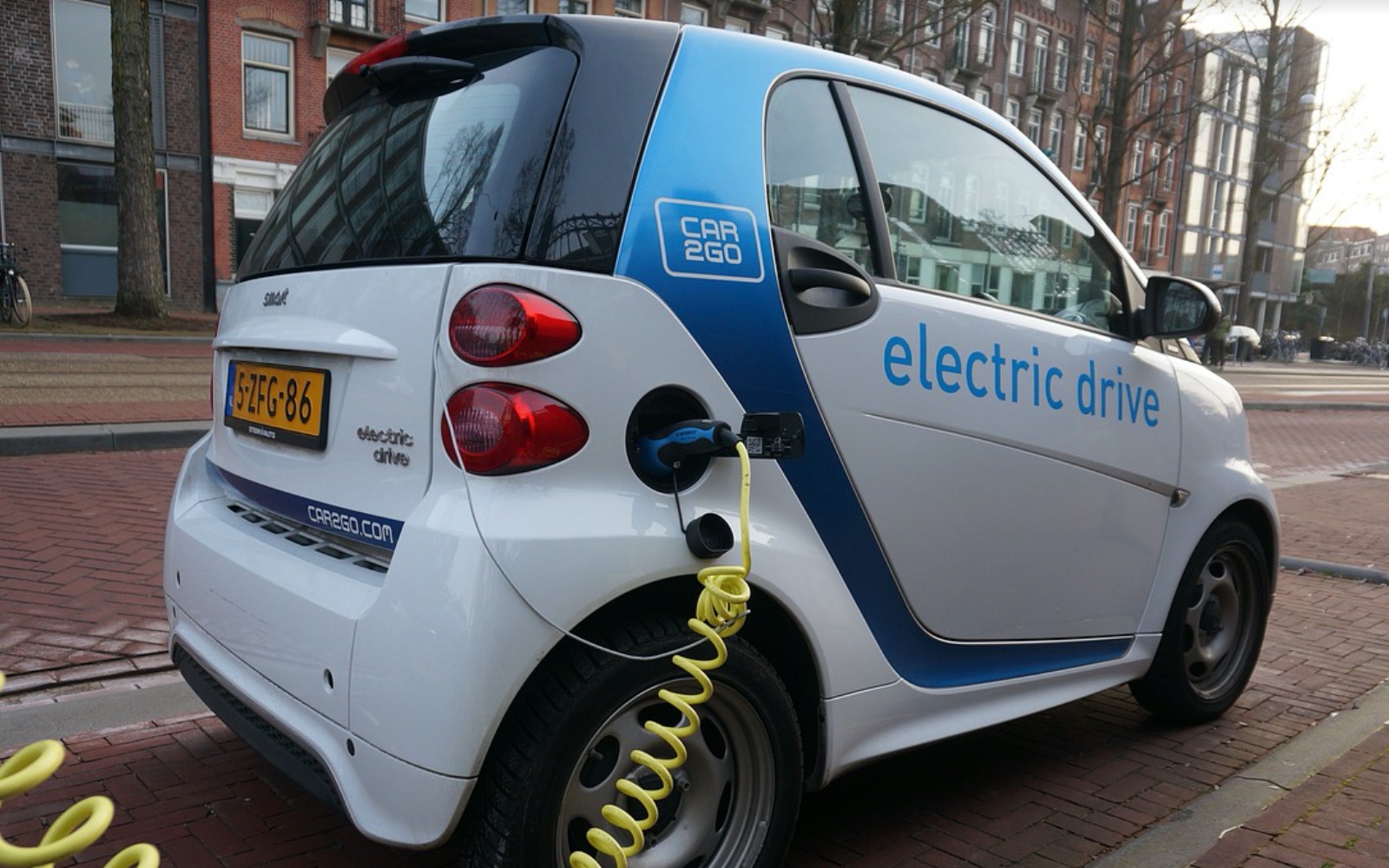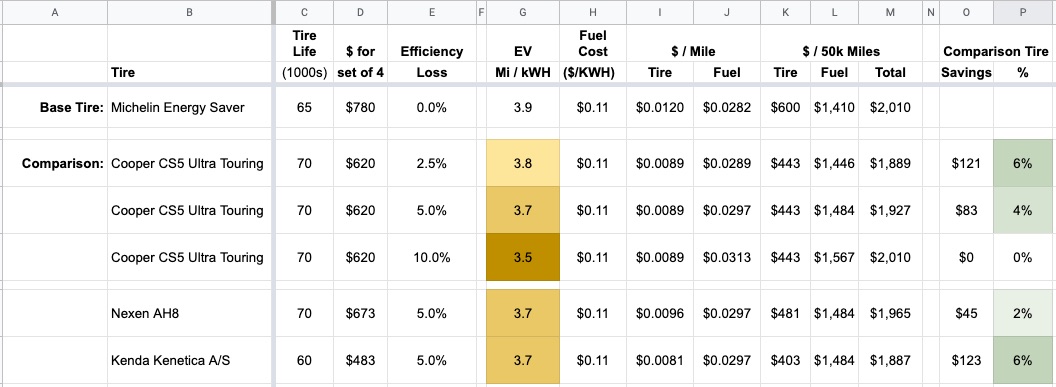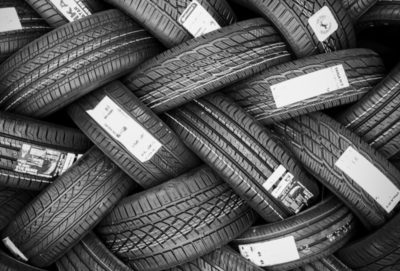So, most Electric Vehicles (EVs) these days come with some expensive low rolling resistance tires. If fact, some think that this may become mandatory (oh my). But tires wear out, and it seems that EVs wear them out even quicker, see my upcoming post to see why.
When you go shopping for new tires, you’ll inevitably be hit with sticker shock on the cost of these Low Rolling Resistance (LRR) tires. For my Chevy Bolt, not only are they low rolling resistance, but also have built-in ‘SelfSeal’ see my upcoming post on why that is a bit silly. Anyway here are the costs that I’ll use for this analysis:
- $195: Michelin Energy Saver A/S SelfSeal 215/50R17 (original equipment, 65K)
- $170: Michelin Energy Saver A/S 215/50R17 (no SelfSeal, 65K)
- $130: Cooper CS5 Ultra Touring 215/50R17 (70k)
For this analysis, we will need to know how much the LRR tires help in terms of efficiency. Well, THIS IS A PROBLEM, because there is very little unbiased information out there. There is no shortage of opinion and hearsay. As the general range seems to be 0 to 10% improvement in MPG, or MPG-ev for electric cars, I’ll use 5%. (Personally, hard for me to believe it would be any higher.)

So, in the sheet above, I have selected the less expensive Michelin WITHOUT SelfSeal, to have a better Apples-to-Apples comparison. The Cooper CS5 are a popular tire used as a comparison. I’m using $100 for installation charge for both. As mentioned above, I’ll use 5% as the loss of efficiency for the standard tire.
This sheet adds the cost of the tires and the cost of the fuel to get a total cost for the tires for 50K miles. In this analysis, the extra cost of the LRR tire, $157 for 50k miles, is NOT regained in the lower fuel usage over that time. The fuel (electric) cost is this example is only $74.

So the LRR tires end up costing you 4% more.
Yes there are lots of variable in play here. Let me list some of the big ones for your consideration.
● The cost of Electricity. 11¢/KWH is pretty cheap here in the mid-West. But, on the other hand, many EV owners might even have FREE electric from their solar panels. So YMMV.
● Efficiency Loss. I used 5%, but I think that even that might be a bit high. Also, this could be fairly dependent on how you drive as well.
● The cost of the non-LRR tires. I used a base price, but because there is more competition for non-LRR tires, there is a much better chance of getting a better price.
My Net Take on LRR Tires
Over time, I expect there to be better analysis of the benefit of LRR tires. For real tree-huggers, it might easily be worth the extra expense. For me, I think I stick with standard tires.
If you’d like to try your own analysis, you are welcome to my Google Sheet. You can find it here.

